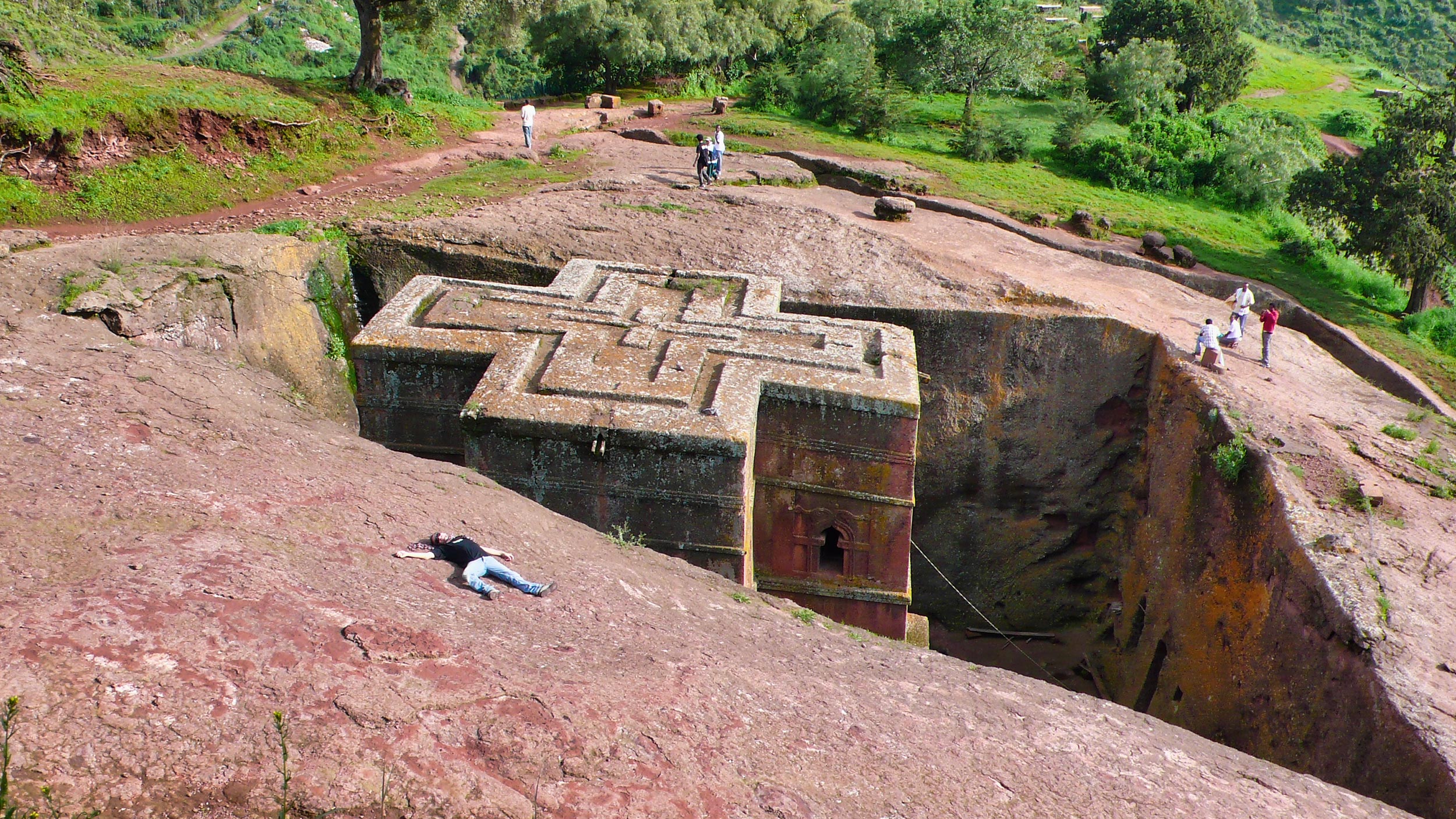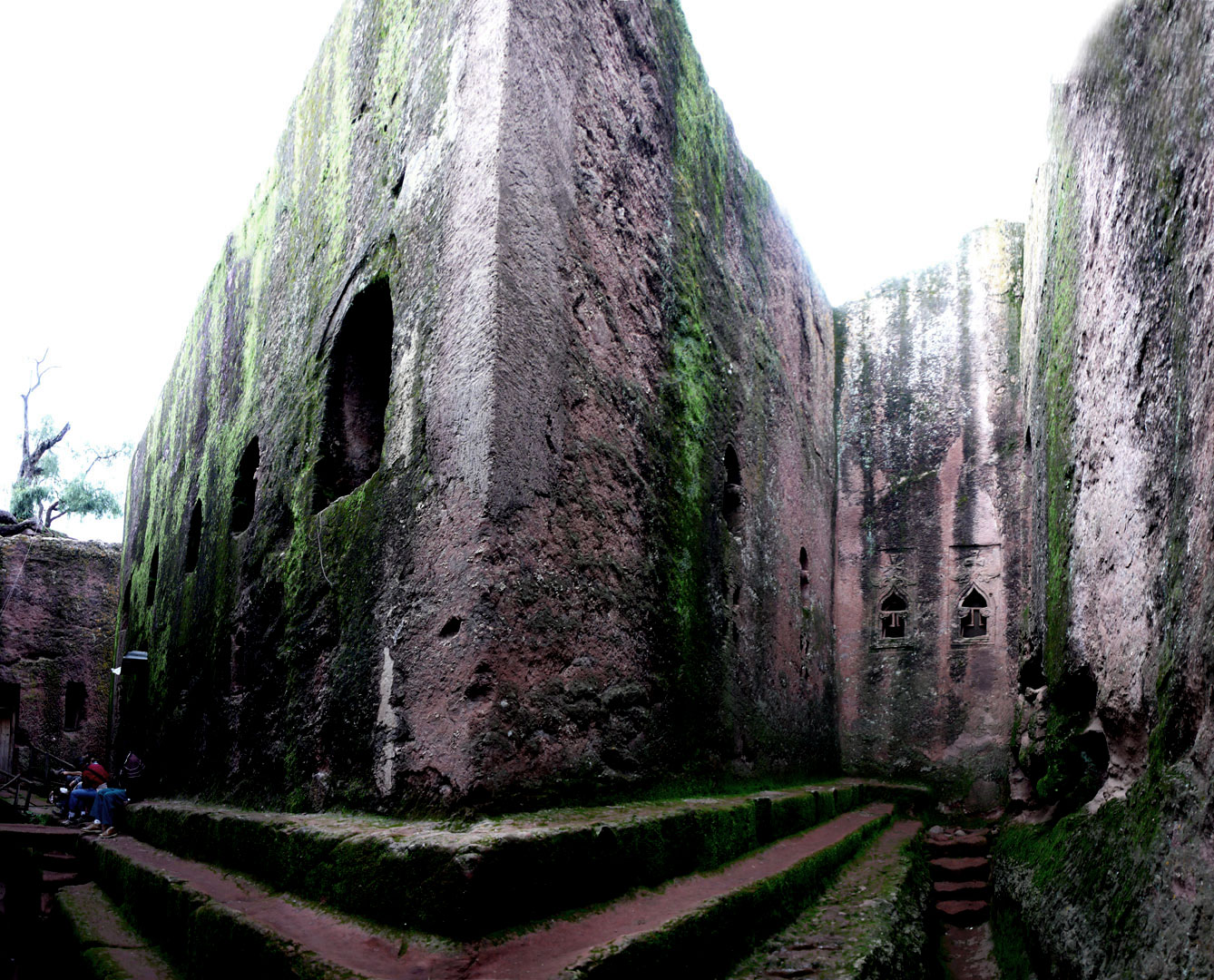Rock-hewn Churches of Lalibela
The Rock-hewn Churches of Lalibela are located in the Western Ethiopian Highlands near the town of Lalibela, named after the late-12th and early-13th century King Lalibela of the Zagwe Dynasty, who commissioned the massive building project of 11 rock-hewn churches to recreate the holy city of Jerusalem in his own kingdom. The site remains in use by the Ethiopian Orthodox Christian Church to this day, and it remains an important place of pilgrimage for Ethiopian Orthodox worshipers.
“The construction of the churches are thought to have taken place in 3 phases.
All 11 churches were the result of a process using the basic tools of hammers and chisels to excavate trenches surrounding the monolithic and semi-monolithic structures as well as a system of tunnels which connected two separate groups of the churches with each other out of the scoriaceous basalt.”
Aksumite Empire
The churches of Lalibela were preceded by the Kedemit Mikael, believed by local tradition to be the first Christian church built in the area. It was commissioned by Aksumite King Kaleb sometime after he founded the city of Roha in the 6th century AD.
Zagwe Dynasty
According to local tradition, the churches are said to have been built during the Zagwe Dynasty and under the rule of King Genre Mesqel Lalibela (r. ca. 1189-1227AD), although it is more likely that they evolved into their current form over the course of several phases of construction and alteration of preexisting structures.
UNESCO World Heritage Site
The 11 medieval monolithic cave churches of this 13th-century 'New Jerusalem' are situated in a mountainous region in the heart of Ethiopia near a traditional village with circular-shaped dwellings. Lalibela is a high place of Ethiopian Christianity, still today a place of pilmigrage and devotions, named a World Heritage Site by UNESCO, in 1978.
Date: August 2008
Photographer: Joan Servitje
Additional information: wikipedia


















